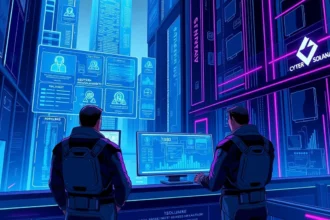Every 4-5 All Core Developer (ACD) calls provide much information, so this “Checkpoint” series summarizes only the important points. The past month’s focus? Pectra’s testnet upgrades and early Fusaka planning. A summary review covers Ethereum’s situation on March 25th 2025.
Pectra: Testnet Turbulence, Mainnet Nears
Insights from devs proved that the challenges on Holešky and Sepolia testnets were unique to their networks without posing threats to the mainnet version. The Holešky network fork experienced a complete failure because most validators moved to another chain-leading to the suspension of finality. The online restoration of Pectra coincided with post-mortem events, which caused a year-long waiting period because numerous validators had left the platform. Hoodi is a new long-running testnet that supports Pectra by planning its Pectra fork for March 26.
Sepolia recovered quickly from its configuration bug because its validator membership is limited (post-mortem analysis shows this true). No majority fork, no drama. The development teams discovered configuration flaws in these instances, which they modified through improvements.
When’s Pectra hitting mainnet? Devs intend to achieve a successful Hoodi fork and use the time to monitor liquid staking protocols, testing their features on the platform. The next 2-3 ACD calls will select a fork epoch, which should happen either late in April or early May.
History Expiry Delayed
Historic expiry had to postpone its drop day from May 1 to post-Pectra mainnet launch. Why? Existing clients have revealed challenges when working with the new deposit snapshot format; thus, sharing these deposits proved riskier with unknown results. The Pectra EIP-6110 eliminates pre-merge history requirements, meaning May 1 will now conduct expiry tests on Sepolia.
Fusaka: PeerDAS Push and Scope Drama
The Fusaka development track operates in parallel at this time while its developer team runs tests on PeerDAS (data availability scaling) and EOF (EVM upgrades). Many EIPs exist as “Proposed for Inclusion,” but the development community narrowly focuses on PeerDAS, which competes with other candidates to become “Scheduled for Inclusion.” EOF kindles discussions because proponents want simpler alternatives, while opponents stand firm, and no resolution emerges at this time.
- March 24: Last call for PFI EIPs.
- Teams need to mark on March 31 which EIPs they plan to discard during the “Drop From Inclusion” (DFI) process.
- April 10: Scope locks.
- Sentiment Shift: Speed vs. Stability
In February, the development momentum shifted toward fast scalability efforts, including PeerDAS, while gas prices rose and additional transactions increased in quantity. Following the stability issues in Holešky and Sepolia, people are now adopting a cautious approach to development. The current mantra is about moving forward at a controlled pace. Mainnet forks will soon receive security enhancements and testing enhancements with standard configuration requirements due to conversations about increased security rigor and comprehensive testing.
Why It Matters
The breakdowns on Pectra’s testnet serve as a reminder that Ethereum’s development becomes deliberate through its chaotic processes. Fusaka materializes PeerDAS alongside Hoodi’s launch to indicate that scale remains supreme, although the fork dimensions have become smaller. Stakers, developers and users experience this difficult process as Ethereum prepares its next development step with its full range of imperfections.









